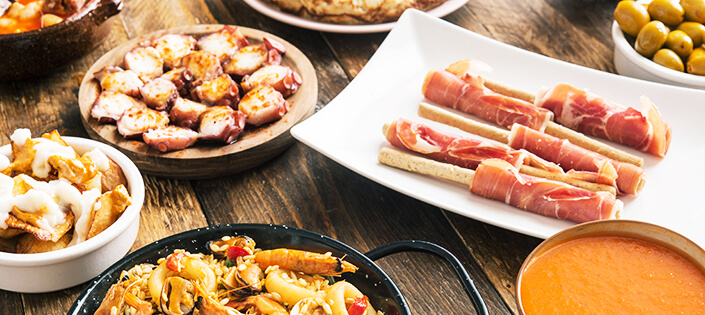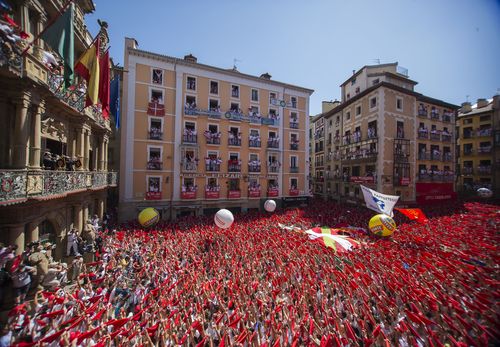Day of the Holy Innocents in Spain | DonQuijote
Discover the tradition behind Day of the Holy Innocents in Spain and Latin America. Did you know how Day of the Holy Innocents in Spain is celebrated?

Do you know what happens in Spain and Latin America every December 28th? It is a tradition to celebrate el Día de los Santos Inocentes (Day of the Holy Innocents), which in other countries is known as April Fool's Day.
This date combines religious traditions and popular customs, making it a perfect opportunity to indulge in humor and pranks in Spain. But where does this holiday come from and what keeps it alive today?
In this article you will discover where this tradition comes from, what happens every December 28 and everything that surrounds this date. Find out with donQuijote!
Religious origins
On December 28, Spain celebrates a very peculiar holiday full of history: el Día de los Santos Inocentes (the Day of the Holy Innocents). A tragic story that has religious origins.
The Day of the Holy Innocents has its origin in a biblical story recorded in the Gospel of St. Matthew. According to Christian tradition, King Herod, fearful of losing his throne after hearing that a “king of the Jews” (Jesus) had been born, ordered the slaughter of all children under the age of two in Bethlehem and its surroundings.
These children, known as “the Holy Innocents”, are considered the first Christian martyrs. Thus, the Catholic Church established December 28 as a day of remembrance for these children, originally charged with a solemn and prayerful tone.
However, over the centuries, the celebration took on a more festive character, combining religious elements with pagan traditions that already existed in various cultures.
Its evolution to today's the Day of the Holy Innocents
The transition from a solemn to a humorous tone can be understood within the context of the winter festivals that were celebrated in different cultures before the arrival of Christianity. For example, during the Roman Saturnalia, it was common for hierarchies to be inverted and jokes normally unthinkable were allowed.
Over time, in Spain and Latin America, the Day of the Holy Innocents acquired a particular character: a mixture of religious tradition and popular revelry. Nowadays, the holiday is experienced as a day of mischief and little pranks aimed at “fooling” others.
So, watch out! On December 28 in Spanish-speaking countries everything is justified with a smile and the phrase: “¡Inocente, inocente!” (innocent, innocent). Don't believe everything you read or see that day and be careful because you too can be the protagonist of a prank.
What do people do on the Day of the Holy Innocents?
Today, December 28 is a day for pranks. Common activities include:
- Home pranks. In many places, the day is used to play pranks on family members. For example, changing salt for sugar, changing the time on the clock or wrapping “presents” with unexpected contents.
- Pranks among friends. It is also common for friends and co-workers to play pranks on each other. From stickers on their backs to changing objects around, creativity knows no bounds on this day!
- Fake news. Some media and television programs participate in the tradition by publishing absurd or false news, with the aim of surprising their readers and viewers. These hoaxes are usually obvious, although there is always someone who falls into the trap. Usually, the next day the news is debunked under the phrase: “¡Inocente, inocente!” (innocent, innocent!)
- Innocent loans. A somewhat forgotten but still surviving tradition in some rural areas is to borrow objects that are never returned. For example, someone might borrow a pot or a hammer, and the next day, the return becomes a joke.
- Local events. In some Spanish towns, the day is celebrated with special events. For example, in Ibi (Alicante) the famous “Fiesta de los Enharinados” takes place, where participants “attack” each other with flour and eggs in a fun pitched battle.
Why does this tradition continue?
The Day of the Holy Innocents has endured over time because it combines elements that appeal to humans: humor, creativity and social connection. It is a day to relax, forget the stresses of everyday life and share laughter with those around us.
In addition, this tradition reinforces the link with popular customs and history. Although modern pranks may seem far removed from their religious origin, they keep alive the spirit of surprise and playfulness that has characterized this holiday for centuries.
Its equivalent in other countries
The Day of the Holy Innocents has a similar equivalent in Anglo-Saxon culture: April Fools' Day, which, as its name suggests, is celebrated on April 1. This date, although it has no religious origin, shares the same spirit of playing pranks and mischief.
Possibly, the celebration of April Fools' Day dates to the adoption of the Gregorian calendar in the 16th century, when the start of the year changed from April 1 to January 1. Stragglers who continued to celebrate the new year in early April became the subject of ridicule and jokes.
In countries such as France, the United States, Canada and the United Kingdom, this day is characterized by pranks ranging from the most innocent to the very elaborate, but always with the same goal: to make people laugh.
If this year you want to participate in the Day of the Holy Innocents because you are doing an intensive Spanish course in Spain, you can participate with your classmates or friends. And remember: if you get caught in a joke, you can always get out of it with a smile and the phrase: “¡Inocente, inocente!”.




















